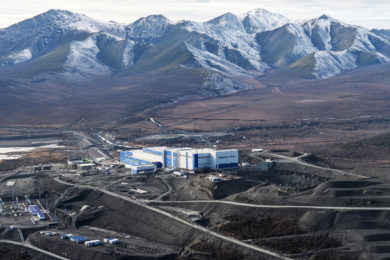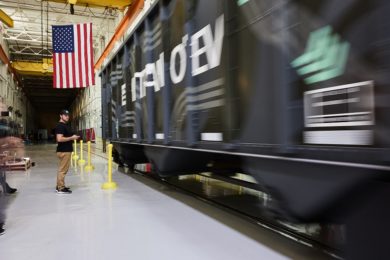In our second Polyus update, following a media briefing in London as part the Polyus Capital Markets Day attended by IM, we look at the huge Natalka gold project. Polyus reports that mining activity restarted in early 2017 and for the full year some 21.8 Mt of rock was moved with ore mined at 2.9 Mt. Average grades in ore mined were 0.96 g/t in 2017, as mining works were concentrated on lower grade zones of the orebody according to the mine plan. P&P reserves under the JORC code are estimated at 16 Moz at 1.58 g/t grade. The Reserves were calculated by AMC Consultants, while the block model by Micromine demonstrated high consistency with the actual mining and verification drilling.
Whittle software was used to develop a series of concentric (or nested) pit optimisation shells by varying the gold price above or below that chosen as the base price for the pit optimisation process of US$1,250/oz. In the open pit, an updated fleet to allow for mining ramp up includes a Komatsu PC4000 hydraulic shovel, with 22 m3 bucket, Komatsu 730E trucks with a 181 t dump body and Atlas Copco D65 class drill rigs; building on the existing early pit development fleet.
The entire processing flowsheet is fully operational including primary gyratory crushing, rock breaker and an apron feeder with two belt conveyors in series to convey crushed ore to the ore stockpile. SAG and ball milling circuit (operating in closed circuit with a hydrocyclone cluster), three stages of gravity separation, intensive cyanidation, CIL circuit, electrowinning and smelting facilities. Works at the cake filtration and desorption circuits were completed in January 2018 and a 72 hour consecutive trial run was successfully carried out also in January 2018 to prove the flowsheet. Recovery rate in January 2018 was 63% at an annualised processing capacity of 5 Mt, increasing to 5.1 Mt in February 2018. The >60% recovery is being achieved even with lower feed grades of 0.6-0.8%. By 2019 ore throughput will be 10 Mt. Operations are being ramped up throughout 2018 with operational expenses to be capitalised till the full commercial production level is achieved.
What really stands out in the flowsheet described to IM is the three stage gravity circuit – with no less than 52 centrifugal gravity concentrators, by far the world’s largest and with sizes up to 42 in. The recovery at stage 1 is around 72%, stage 2 5% and stage 3 around 1%. The screened gravity separation stage 1 concentrate will gravity flow to one of five Gekko Systems InLine Leach Reactors (ILRs), then to CIL, with the second and third gravity stages direct to CIL. Following CIL are the electrowinning and smelting steps. The three stage gravity circuit includes multiple concentractors from the two world leaders -FLSmidth’s Knelson brand and Sepro Mineral Systems’ Falcon brand. Not having flotation means no large volumes of associated reagents.










